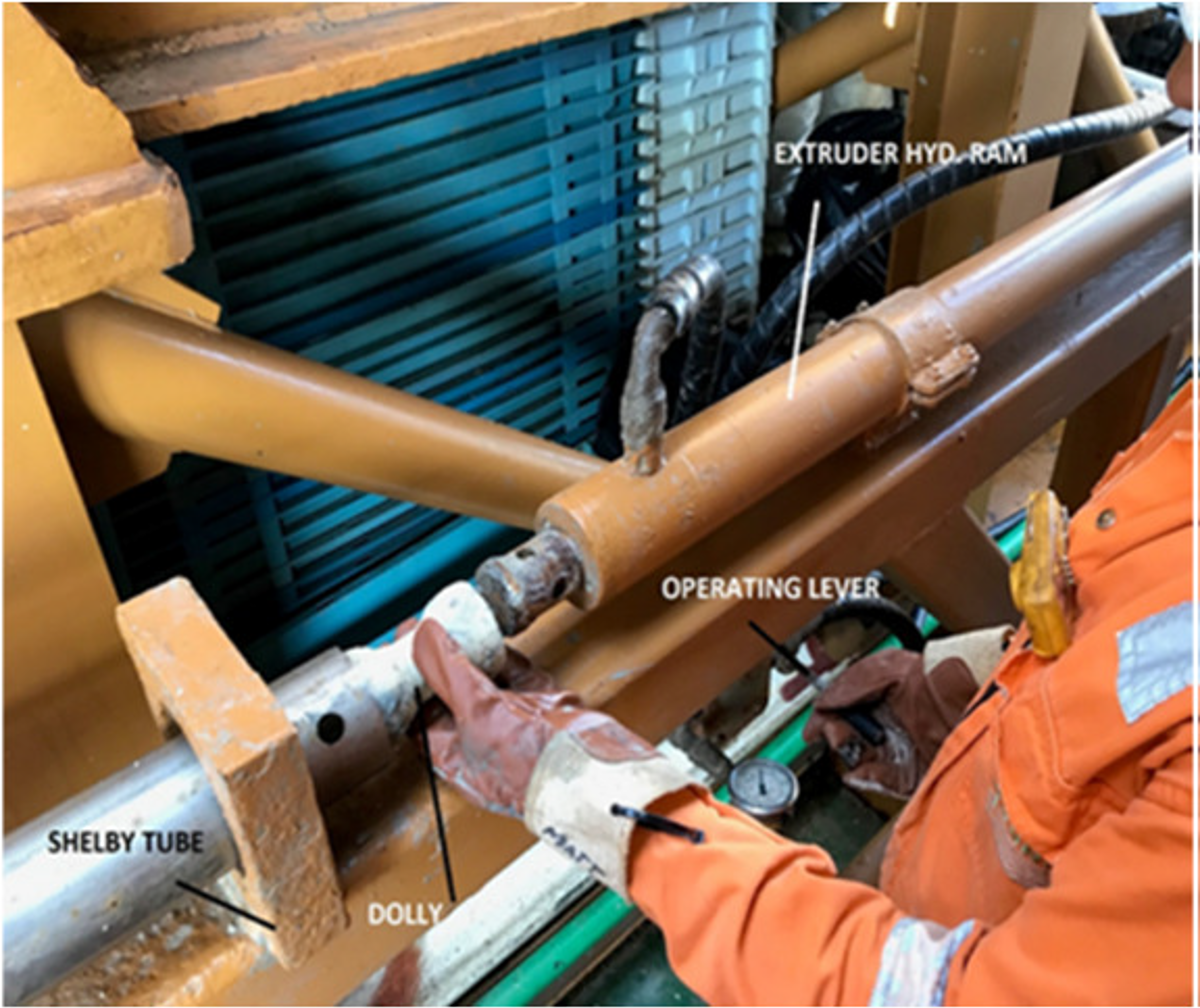Hydraulic sample extruder – finger laceration
- Safety Flash
- Published on 24 July 2020
- Generated on 14 December 2025
- IMCA SF 22/20
- 2 minute read
Jump to:
What happened?
Whilst using a hydraulic sample extruder in a laboratory, the technician caught and injured his finger between the Shelby tube and extruder ram while trying to stabilise the dolly.
The incident resulted in a lost workday case.
What were the causes? What went wrong?
The investigation identified the following contributing factors:
- Training – insufficient task training and competence assessment.
- Supervision – ineffective supervision.
- Risk Assessment – the task risk assessment did not consider the equipment limits and functions or advances in technology, therefore not all the hazards and associated risks were identified or controlled.
- Design – the sample extruder design is dated and does not consider human factors or ergonomics.
- Line of Fire – the technician placed his hand between the moving hydraulic sample extruder ram and Shelby tube.
Lessons learned
- Employee training and competence assessment, together with the appropriate level of supervision, is essential.
- Risk assessments and work instructions should be current and periodically reviewed to take account of new information, changes in technology and legislation.
- A standardised hydraulic sample extruder design / type and use would be central to the reduction of incidents of this sort.
Actions
- Improved employee training, competence management and supervision requirements.
- Reviewed and revised equipment and task risk assessments.
- Improved signage and labelling, start/stop controls and added guard for moving parts / shear point.
- Standardised hydraulic sample extruder design / type and use across the company.
- Develop common operating procedures for this equipment.
Related Safety Flashes
-
IMCA SF 13/19
4 June 2019
-
-
IMCA SF 28/16
18 October 2016
-
IMCA SF 03/16
27 January 2016
IMCA Safety Flashes summarise key safety matters and incidents, allowing lessons to be more easily learnt for the benefit of the entire offshore industry.
The effectiveness of the IMCA Safety Flash system depends on the industry sharing information and so avoiding repeat incidents. Incidents are classified according to IOGP's Life Saving Rules.
All information is anonymised or sanitised, as appropriate, and warnings for graphic content included where possible.
IMCA makes every effort to ensure both the accuracy and reliability of the information shared, but is not be liable for any guidance and/or recommendation and/or statement herein contained.
The information contained in this document does not fulfil or replace any individual's or Member's legal, regulatory or other duties or obligations in respect of their operations. Individuals and Members remain solely responsible for the safe, lawful and proper conduct of their operations.
Share your safety incidents with IMCA online. Sign-up to receive Safety Flashes straight to your email.
